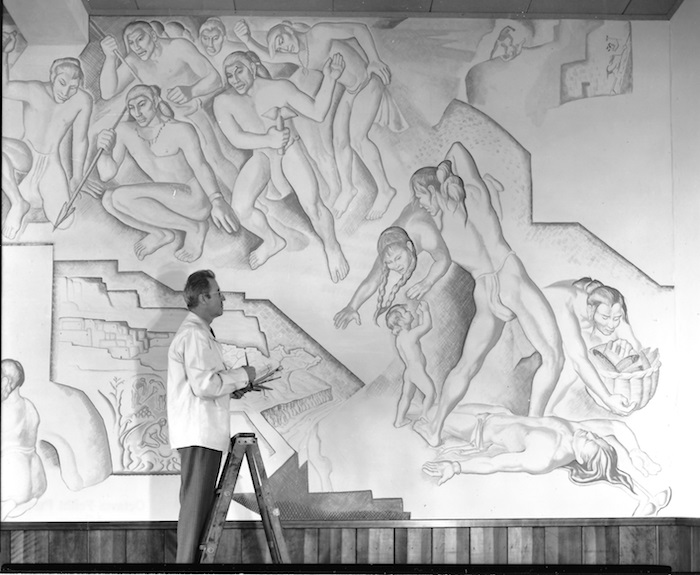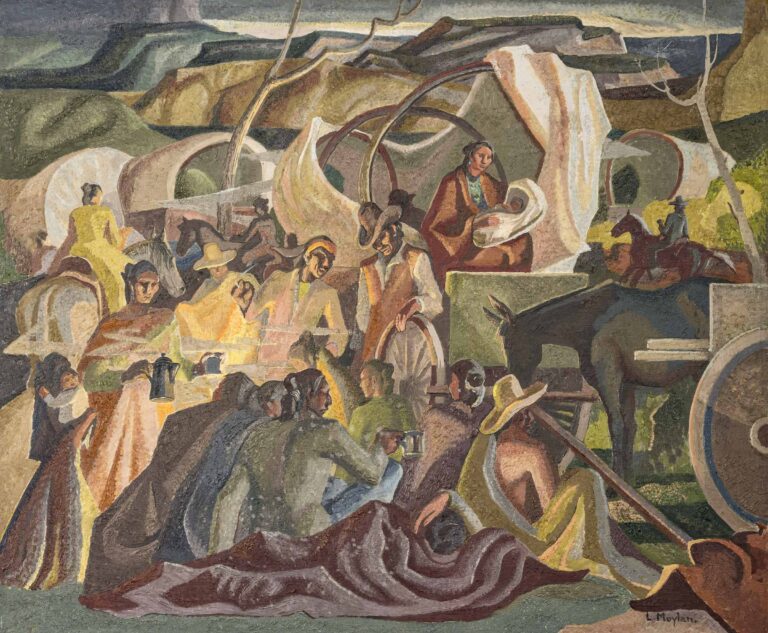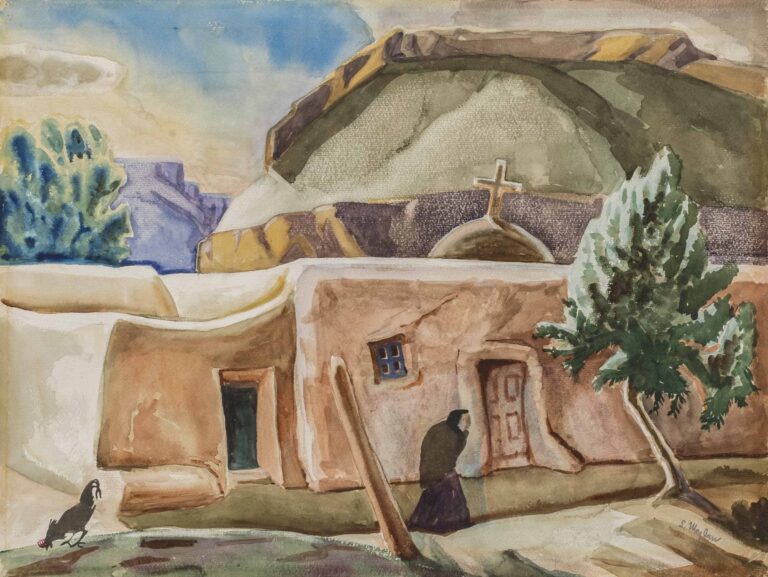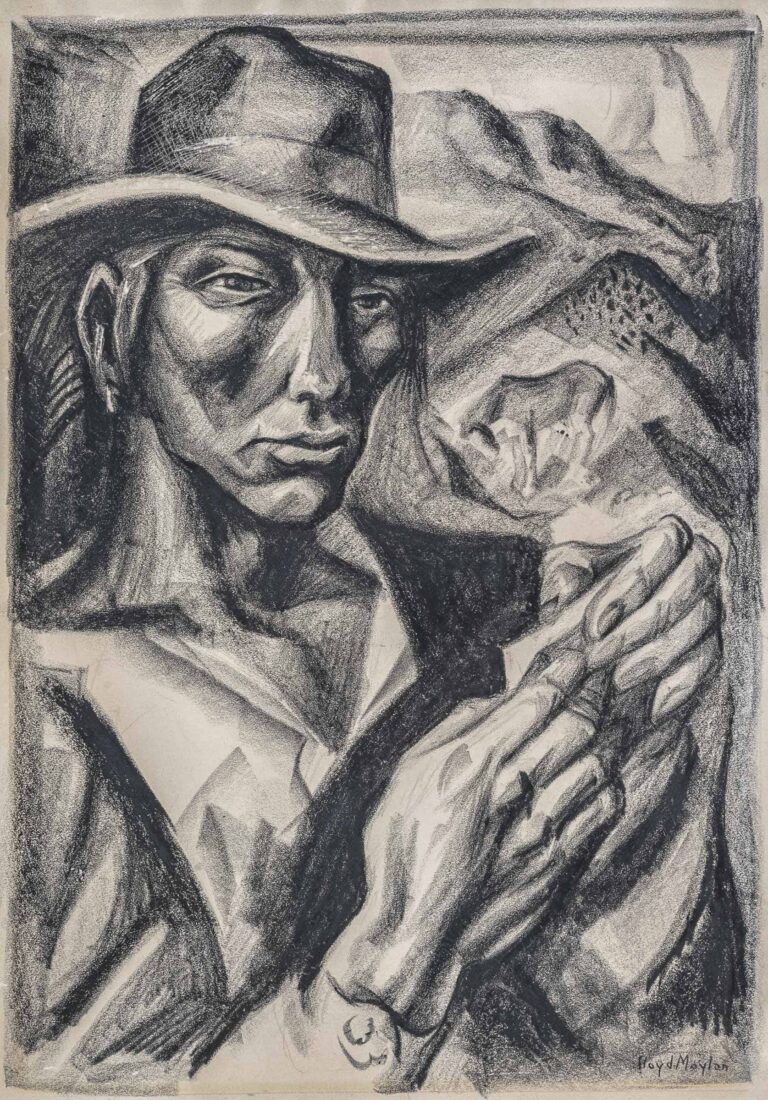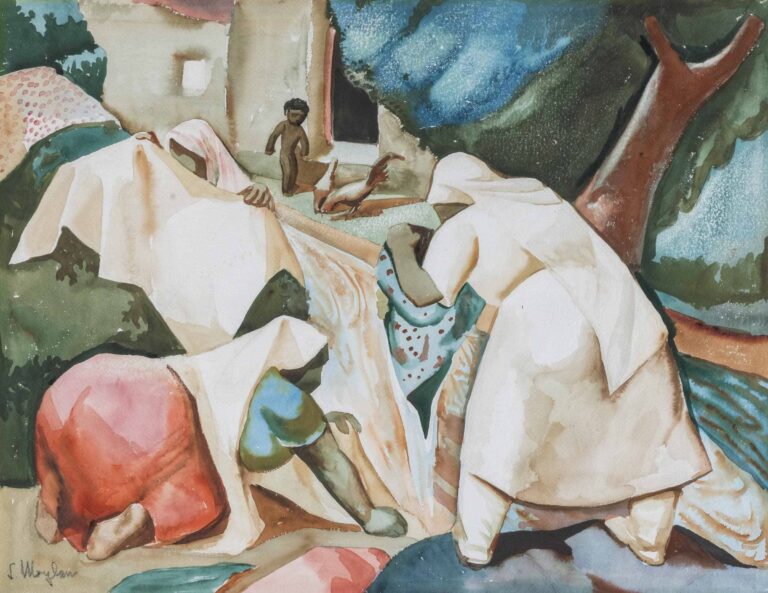Lloyd Moylan was a very productive New Deal artist. Indeed, he is the best-represented artist in Gallup’s New Deal art collection, which holds nineteen of his easel paintings and prints and one of his largest mural commissions (2,000 square feet).
Moylan first trained in his hometown at the Minneapolis Art Institute before continuing his studies at The Art Students League in New York City. A teaching position at the Broadmoor Art Academy brought him west to Colorado Springs, CO, in 1920. Moylan’s interest in mural painting developed during this time as the result of several trips to Mexico—the Mexican mural movement began in the early 1920s.
Moylan completed several private mural commissions in Colorado Springs, including for the Antlers Hotel, which involved research travel to Taos, NM. Those visits inspired his move to New Mexico in 1934, where he set up a studio in Alcalde along with D. Paul Jones, who studied at the Broadmoor. In New Mexico, Moylan continued creating murals on a commission basis, for the Ute Theatre (since demolished) for example, but mainly now through the state’s Federal Art Project (FAP). The New Mexico FAP hired Moylan for large-scale murals at Eastern New Mexico University in Portales and Highlands University in Las Vegas (see “Additional Federal Art Projects” section below) in addition to McKinley County’s historic courthouse in Gallup. As a result of his participation in the New Deal, Moylan became a big believer in the value of public art and murals in particular. In an essay for the Federal Art Project, he wrote that public art “will bring to the surface much that is growth-provoking in the spirit of humanity.”1
At the conclusion of the New Deal, Mary C. Wheelwright hired Moylan as the first administrator/curator of the Museum of Navajo Ceremonial Art, which she founded in 1937 in Santa Fe (and which is now known as the Wheelwright Museum of the American Indian).
Moylan served in that capacity for twelve years, during which time he gained broad recognition as a painter, building on his reputation as a muralist. Moylan was well known by contemporaries as a premier watercolorist, “cherished modernist,”2 and “specialist in Navajo subject matter.”3 He was a popular and frequent gallery and museum exhibitor, with a following of “Moylan enthusiasts.”4 He was an art judge for the State Fair in 1943, and his work was included in defining exhibitions of the era, including the Museum of New Mexico’s Styles in New Mexico Art traveling exhibition in 1946 as well as its 1955 traveling exhibition Santa Fe Art 1917–1955.
Wheelwright dismissed Moylan from his post in 1954, after which his career diminished. Moylan spent the last decade of his life between California and New Mexico.

